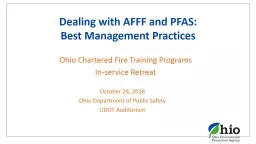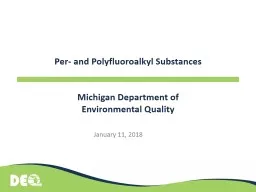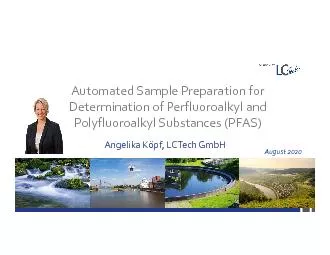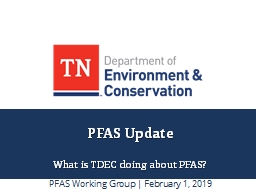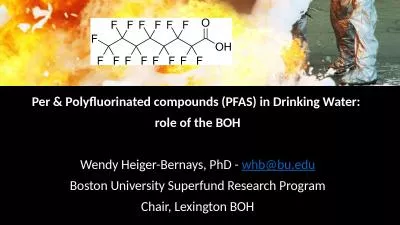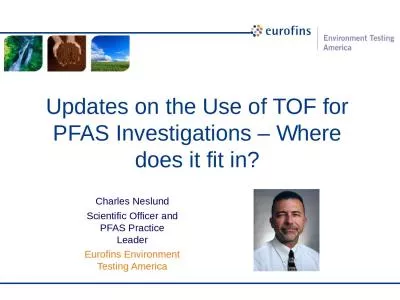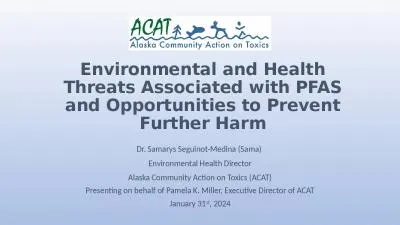PPT-Dealing with AFFF and PFAS: Best Management Practices Ohio Chartered Fire Training Programs
Author : olivia-moreira | Published Date : 2019-11-05
Dealing with AFFF and PFAS Best Management Practices Ohio Chartered Fire Training Programs Inservice Retreat October 24 2018 Ohio Department of Public Safety ODOT
Presentation Embed Code
Download Presentation
Download Presentation The PPT/PDF document "Dealing with AFFF and PFAS: Best Managem..." is the property of its rightful owner. Permission is granted to download and print the materials on this website for personal, non-commercial use only, and to display it on your personal computer provided you do not modify the materials and that you retain all copyright notices contained in the materials. By downloading content from our website, you accept the terms of this agreement.
Dealing with AFFF and PFAS: Best Management Practices Ohio Chartered Fire Training Programs: Transcript
Download Rules Of Document
"Dealing with AFFF and PFAS: Best Management Practices Ohio Chartered Fire Training Programs"The content belongs to its owner. You may download and print it for personal use, without modification, and keep all copyright notices. By downloading, you agree to these terms.
Related Documents

